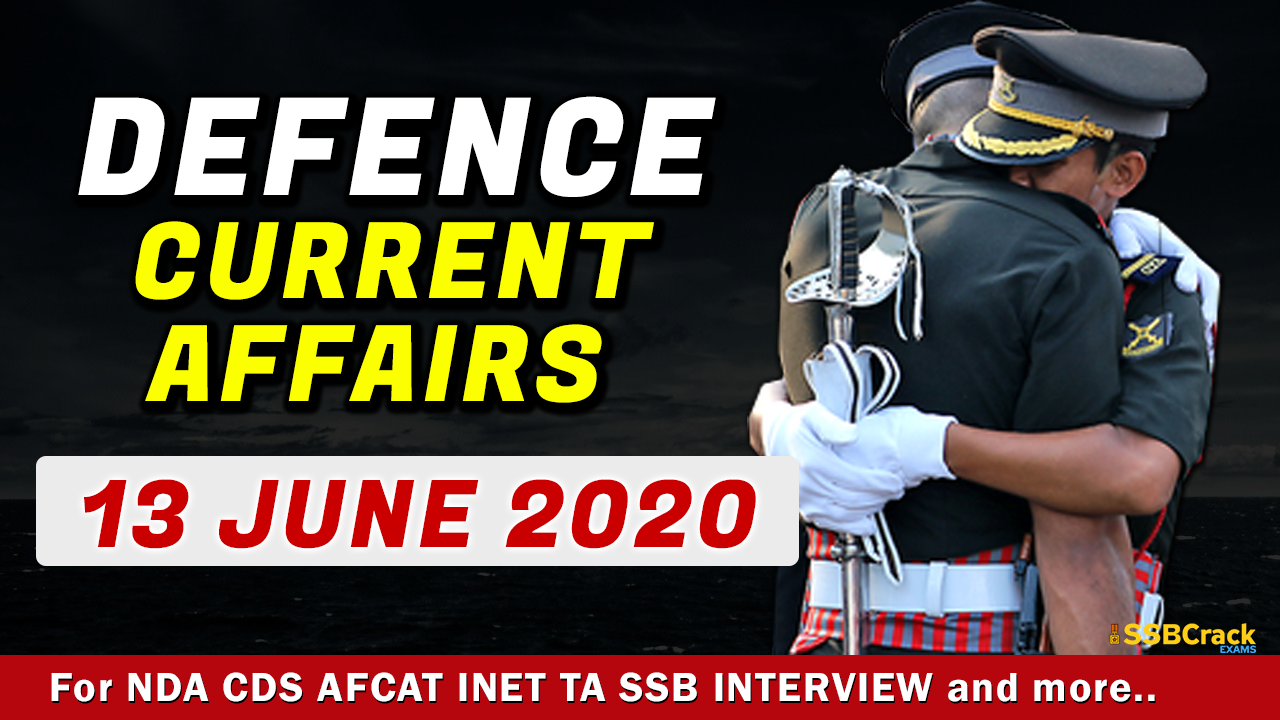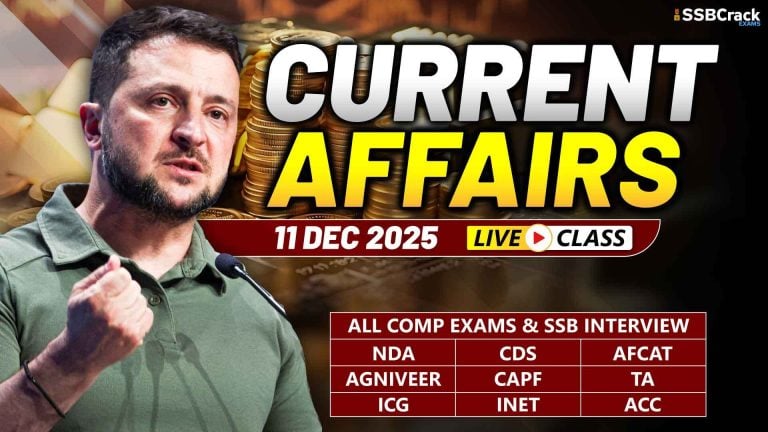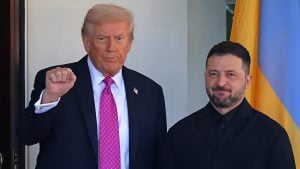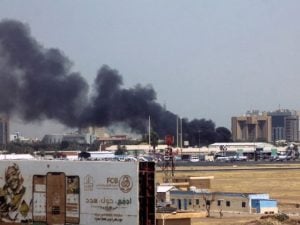Today we have 6 important military parades of the following academies:
- Indian Military Academy, Dehra Dun (Passing Out Parade)
- Indian Naval Academy, Ezhimala (Course Completion Ceremony)
- Officers’ Training Academy, Gaya (Passing Out Parade)
- College of Military Engineering, Pune (TES-35 Course – PoP)
- Military College of Telecommunications Engineering, Mhow (TES-35 Course – PoP)
- Military College of Electronics and Mechanical Engineering, Secunderabad (TES-35 Course – PoP).
Indian Military Academy, Dehra Dun
- As many as 333 officers joined the Indian Army on Saturday after the Passing Out Parade at the Indian Military Academy (IMA) in Dehradun.
- Notably, due to COVID outbreak, for the first-time guardians of the cadets were not invited in order to avoid crowding. Wearing a face mask, Army chief General MM Naravane reviewed the Passing Out Parade of 423 officers including 90 Gentleman Cadets from nine friendly foreign countries.
- The Indian Military Academy (IMA) is an officer-training academy of the Indian Army in Dehradun, Uttarakhand. It was established in 1932 following a recommendation by a military committee set up under the chairmanship of Field Marshal Philip Chetwode. From a class of 40 male cadets in 1932, IMA now has a sanctioned capacity of 1,650. Cadets undergo a training course varying between 3 and 16 months depending on entry criteria. On completion of the course at IMA cadets are permanently commissioned into the army as Lieutenants.
- The Academy, spread over 1,400 acres (5.7 km2), houses the Chetwode Hall, Khetarpal Auditorium, Somnath Stadium, Salaria Aquatic Centre, Hoshiar Singh Gymnasium and other facilities that facilitate the training of cadets. Cadets in IMA are organized into a regiment with four battalions of four companies each. The Academy’s mission, to train future military leaders of the Indian Army, goes hand in hand with the character building enshrined in the IMA honour code, warrior code and motto. Cadets take part in a variety of sports, adventure activities, physical training, drills, weapons training and leadership development activities.
- The Academy’s alumni include six recipients of India’s highest military decoration, the Param Vir Chakra, and India’s first Field Marshal Sam Manekshaw. Other achievements by alumni include 73 Military Crosses, 17 Ashoka Chakras, 84 Maha Vir Chakras and 41 Kirti Chakras. In 2017, Lieutenant Ummer Fayaz Parray was the 847th name to be engraved on the IMA War Memorial, which honours alumni of the Academy who have fallen in the course of action.
- MOTTO: “Veerta aur Vivek” “वीरता और विवेक” (Valour and Wisdom)
- COMMANDANT: Lt. Gen J S Negi
Indian Naval Academy, Ezhimala
- Indian Naval Academy (INA), Ezhimala will hold its Course Completion Ceremony for Spring Term 2020 on Saturday, 13th June 2020. The ceremony will be a scaled down events without presence of parents and guests of trainees, considering the precautions to be followed during COVID -19 crisis.
- The trainees who will complete their training, comprise four different courses of Spring Term 2020, viz., 98th Indian Naval Academy Course (B.Tech.), 98th Indian Naval Academy Course (MSc), 29th Naval Orientation Course (Extended) and 30th Naval Orientation Course (Regular) including Coast Guard and trainees from friendly foreign countries.
- The Indian Naval Academy (INA or INA Ezhimala) is the initial officer training establishment of the Indian Navy and the Indian Coast Guard, located in Ezhimala, Kannur district, Kerala. Situated between Ezhimala hill and the Kavvayi backwaters, INA has a 7-kilometre beach front on the Arabian Sea. It conducts basic training for all officers inducted into the Indian Navy and Indian Coast Guard. It is the largest naval academy in Asia.
- The Naval Academy (NAVAC) was established in May 1969, while its Ezhimala campus was inaugurated on 8 January 2009 and the name changed to Indian Naval Academy. It shares the 2,452-acre (9.92 km2) site with the naval base depot, INS Zamorin, and the naval hospital, INHS Navjivani.
- The President’s Colour was awarded to INA on 20 November 2019. The President’s Colour is the highest honour that is bestowed upon a military unit.
- MOTTO: “Vidyayaa Amrutam Ashnute” “विद्ययाऽमृतमश्नुते” (Translation: Be Immortal Through Knowledge); Shaping future Naval Leadership
- COMMANDANT: Vice Admiral Dinesh K. Tripathi
Officers’ Training Academy, Gaya
- Unlike the previous 16 passing out parades (PoP) organised by the Gaya Officers’ Training Academy (OTA), there will be no multi-activity display at the 17th PoP scheduled to be held on June 13. On all previous occasions, a fascinating and adventurous multi-activity display showcasing physical fitness and military skills of the future Army officers used to be held a day ahead of the PoP.
- The commandant regretted that the cadets will not be displaying their skill and valour through demonstration of horse rides and other martial arts, including conventional martial arts. “It was not possible to hold the celebration as per convention on account of Covid-19 pandemic,” the commandant said.
- The Officers Training Academy (OTA) are training establishments of the Indian Army that train officers for the Short Service Commission (SSC). The 49-week course at the OTA prepares graduates for all branches of the Army, except for the Army Medical Corps. Established in 1963, the first academy is located in the outskirts of Chennai. A new academy was set up at Gaya in 2011; but was given the go-ahead in December 2019 to be disbanded, so probably, this “might” be the last military PoP of OTA Gaya.
- OTA Gaya, set up in 2011, is located amid an estate of approximately 870 acres in a hilly terrain of Paharpur at Gaya. The academy is located en route from Gaya to Bodhgaya, approx 7 km from Gaya railway station. The international airport of Gaya is adjacent to the academy. In its vicinity is Bodhgaya, an international tourism destination. Gaya Cantonment dates back to World War II, as one of the headquarters of the British Army.
- To mark the commencement of the academy, a flag hoisting ceremony was solemnised and the consecration of the raising of the academy was carried out in true secular tradition of the Indian Army, with recital of scriptures from holy books of different religions. The academy has been equipped with state of the art training facilities, at par with other pre-commissioning training institutions.
- The insignia of Officers Training Academy, Gaya has a two-colour background, with upper half as grey and the lower half blood-red, having two cross swords superimposed with the Dharmchakra. A scroll below bears the motto of the academy – ‘Shaurya, Gyan, Sankalp’ in devnagri.
- MOTTO: “Shaurya Gyan Sankalp” “शौर्य ज्ञान संकल्प” (Valour, Knowledge, Volition)
- COMMANDANT: Lt Gen Sunil Srivastava
College of Military Engineering, Pune
- College of Military Engineering (CME) is a premier technical and tactical training institution of the Indian Army Corps of Engineers of the Indian Army, this includes Combat Engineers, Military Engineering Service, Border Roads Engineering Services (BRES) and Survey.
- The college it is situated at Dapodi on NH 4, adjacent to the Khadki cantonment, a large army base in Pune district, north of the Pune city. Established in 1943, as the ‘School of Military Engineering’ (SME) at Roorkee, apart from imparting training to Indian army officers and those from friendly countries, the college also plays an advisory role to the Indian Army and is involved in research projects and experimentation.
- CME offers training for personnel, both Officers and Personnel Below Officers Rank (PBOR) of the Corps of Engineers, other arms & services, Navy, Air Force, Para-Military forces, Police and also civilians. Its students also include soldiers from friendly foreign countries like the Maldives, Sri Lanka, Bangladesh and Nepal.
- The college is affiliated to Jawaharlal Nehru University (JNU) for its B Tech and M Tech degrees. And its graduate and post graduate courses are recognised by The ‘All India Council for Technical Education’ (AICTE) and University of Pune.
- Courses for Engineering Officers for 3 years duration.
- M Tech in Structural Engineering and Energy Systems
- B Tech in Civil Engineering, Electrical Engineering and Mechanical Engineering
- For Corps of EME Officers first 3 semesters of B Tech degree for 1½ years.
- B Tech in Mechanical Engineering
- For Corps of Signal Officers first 3 semesters of B Tech degree for 1½ years.
- B Tech in Communication Engineering
- Two years Diploma courses for subordinate staff in Electrical, Civil and Draughtsperson category.
- MOTTO: Power Through Knowledge
- COMMANDANT: Lt Gen Michael Mathews
Military College of Telecommunications Engineering, Mhow
- Consequent to national emergency in 1962 a requirement was felt to give pre-commission Signal training to cadets from the Indian Military School (now IMA). Thus an additional `cadets’ wing came into existence in Feb 63 as an affiliate to Tactical Wing. It was later called TOs Wing.
- On 1 Oct 1967, the School was redesignated as Military College of Telecommunication Engineering and Tactical and Technical Wings became Faculty of Combat Communications Engineering (FCC) and Faculty of Communication Engineering (FCE) respectively. Graduation from School to College in 1967 also saw addition of Technical Maintenance and Training Aid Wing and the Equipment and QM Wing. With the advent of computers, the Faculty of Computer Technology and Systems was added in Feb 1971. EMC/EMI cell was established in 1980 as part of the prestigious project of the Department of Electronics. This cell was then expanded and on 19 Jun 1986 it became Army EMC Agency, a separate establishment which is now Army Centre for Electromagnetics (ACE) wef 1 Jan 97. Establishment of the Cadets Training Wing on 10 Jul 2000, heralded the dawn of another era in the History of MCTE.
- MOTTO: “Yudhaya Krut Nishchaya” “युध्दाय कृत निश्चयः” (Enter into battle with Resolve)
- COMMANDANT: Lt Gen Milind N Bhurke, VSM
Military College of Electronics and Mechanical Engineering, Secunderabad
- As many as 24 gentleman cadets of Technical Entry Scheme-35 (TES-35) course have passed out through the portals of Cadet Training Wing (CTW), Military College of Electronics and Mechanical Engineering (MCEME) at Cariappa Drill Square, CTW in Bolarum on Saturday.
- Notably, due to coronavirus outbreak, for the first time guardians of the cadets was not invited in order to avoid crowding. The young cadets were also seen donning face masks while marching forth as Techno Warriors, Military leaders and custodians of National honour and security as they join the folds of the Indian Army as commissioned officers.
- In 1948-49, when the Directorate of Technical Training was formed in Military Training Directorate, the School was classified as a Category ‘A’ establishment. The control, less that of local administration, became the responsibility of the Military Training Directorate under General Staff Branch.
- The School during training year 1951-52 trained 107 officers, 68 Junior Commissioned Officers (JCOs) and 463 Other Ranks (OR). In 1952 it was decided to move the School to Secunderabad. Colonel PSG Trivedi assumed command on 31 December 1952 as the first Indian Commandant of the School and moved the School to Secunderabad.
- A number of minor alterations were made to the buildings to make them suitable for use as an instructional institution. An old barrack was converted into Officers’ Mess which later became the Corps Officers’ Mess. The open-air theatre was built in 1957 and a number of other major works projects were initiated for the School to make up deficiencies in offices, instructional blocks and living accommodation. The foundation of the present-day library and Corps Archives and Museum was laid by then DEME, Major General Harkirat Singh.
- The quality of training was also improved during this period by laying emphasis on production of training literature and training aids. A number of training films were procured for the first time. The training output for 1957-58 was a total of 1,228 all ranks. In pursuance of the then DEME’s directive on training, the syllabi of long technical courses were revised to lay emphasis on theory and engineering practices in design of equipment. This ensured that the students acquired a sound technical background to meet new challenges posed by gradual introduction of new sophisticated equipment in the Army and great developments in engineering technology in the fifties.
- In keeping with this concept, the nomenclature of the courses for officers were changed. General Basic Officers’ Course was re-designated as the Young Officers’ Course; Telecommunication Officers’ Course as Advanced Electronics Engineering Course; Armament Officers’ Course as Advanced Armament Engineering Course and the General Officers’ ‘A’ Vehicles Course as Advanced Mechanical Engineering Course, with generally longer durations.
- Peace Establishment of the school was revised in June 1960, increasing its capacity to train 800 students at any one time as against the earlier capacity for 640 students. The command of the School was raised to that of a Brigadier and authorised a staff of 52 officers and 949 all ranks including civilians.
- The requirement for proper management of resources to meet the needs of the field army, both in peace and war, had been under discussion for some years and a need was felt for formal management training. One of the most significant decisions in 1960 was the setting up of a Tactics and Management Wing at the School.
- The credit for initiating teaching of modern management techniques in the Indian Army belongs to Corps of EME. EME School had the honour of being the first school of instruction in the Indian Army to start such a course.
- The school was upgraded to the status of a college in 1967 and renamed as Military College of Electronics and Mechanical Engineering with three faculties viz, Faculty of Electrical and Mechanical Engineering (FEME), Faculty of Electronics (FEL), and Faculty of Industrial Engineering and Logistics Management (FILM). In 1972, FILM was reorganised and renamed as the Faculty of Industrial Engineering and Tactics (FIET). A new faculty, Faculty of Aeronautical Engineering (FAE) was added in 1986 to train officers and personnel below officers rank in order to meet the challenges confronting the Corps of EME due to formation of Army Aviation Corps.
- In the year 2000, a Cadets Training Wing was added to train Gentlemen Cadets of the newly introduced 10+2 Technical Entry Scheme (TES).
- MOTTO: “Karm Hi Dharm” “कर्म ही धर्म” (Work is Worship)
- COMMANDANT: Lt Gen TSA Narayanan
Watch Gentlemen Cadets of TES-35 course taking the solemn oath and passing out from the portals of prestigious Cadets Training Wing, College of Military Engineering (CME) Pune, Military College of Telecommunication Engineering (MCTE), Mhow and Military College of Electronics and Mechanical Engineering (MCEME) Secunderabad. You can find more details about the passing out parade on Indian Army’s official YouTube Channel and in all social media handles of SSBCrack and SSBCrack Exams.
REVIEW QUESTIONS
- What is the motto of IMA?
- Veerta aur Vivek
- Ekta aur Anushasan
- Shaurya Gyan Sankalp
- Karm Hi Dharm
ANSWER: A
- Lt Gen Milind N Bhurke, VSM is the Commanding Officer of:
- MCEME, Secunderabad
- IMA, Dehra Dun
- MCTE, Mhow
- CME, Pune
ANSWER: C
- “Shaurya Gyan Sankalp” is the motto of:
- OTA, Chennai
- OTA, Gaya
- IMA, Dehra Dun
- CME, Pune
ANSWER: B
- Which Naval Hospital operates at INA Ezhimala?
- INHS Nivarini
- INHS Ashwini
- INHS Patanjali
- INHS Navjivani
ANSWER: D
- Today, Army Chief Gen. MM Naravane reviewed the PoP of which Academy?
- IMA
- OTA
- CME
- MCTE
ANSWER: A



















